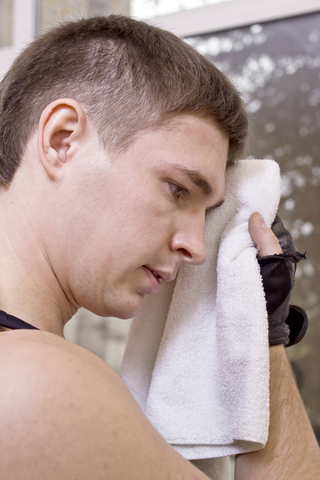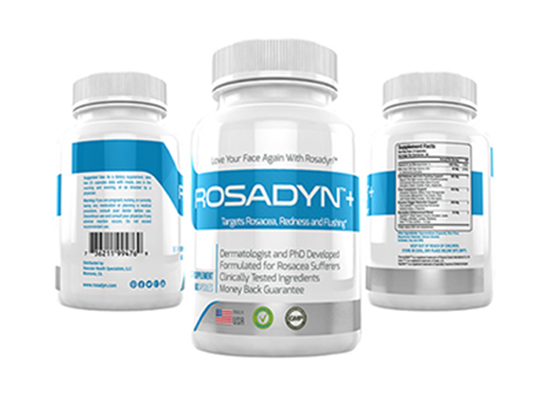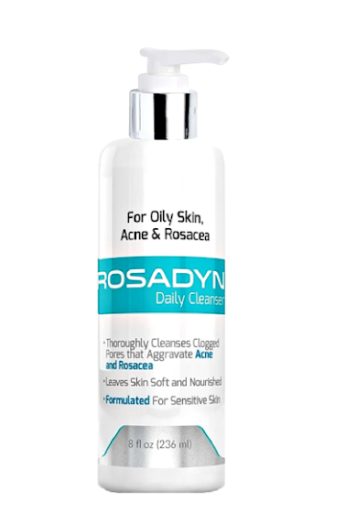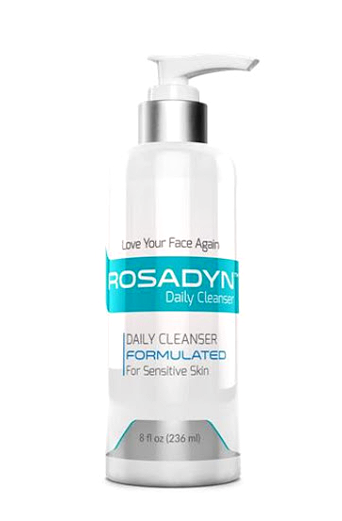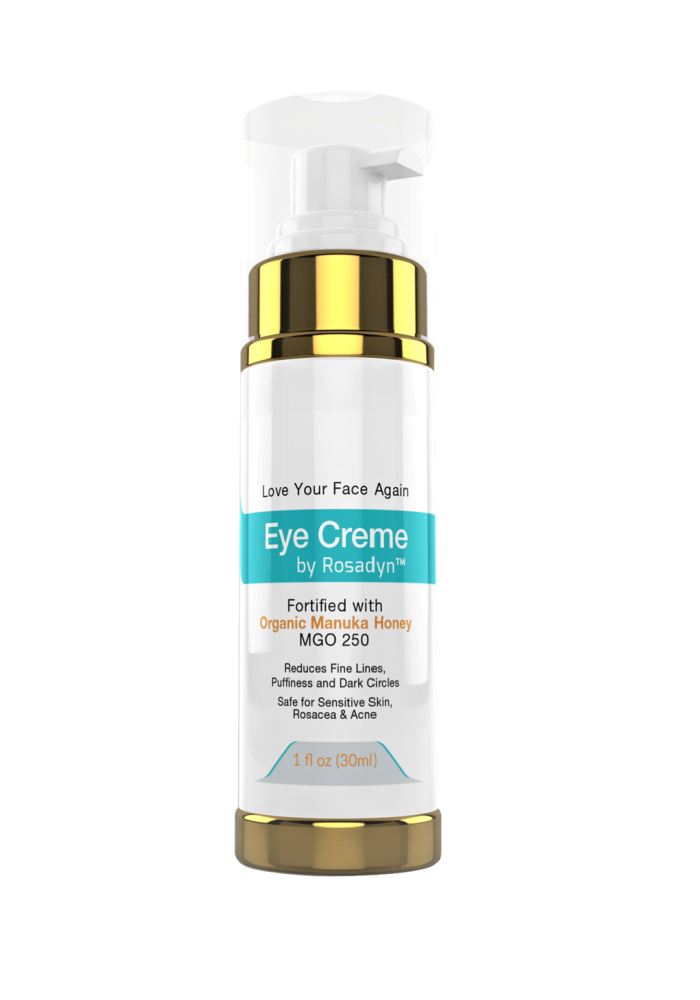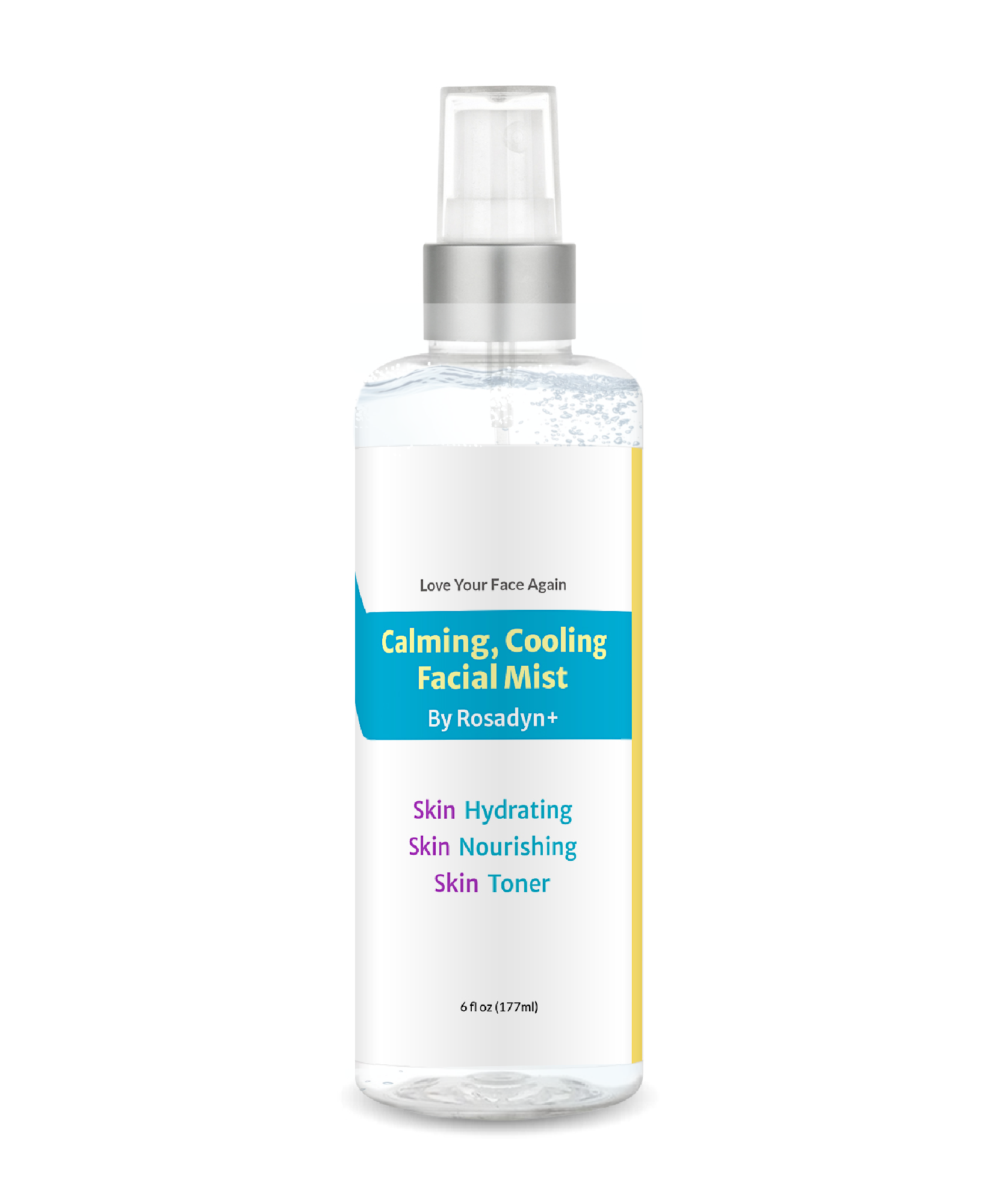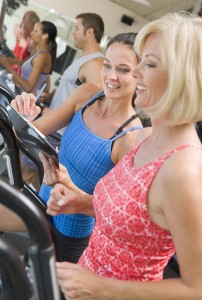 Facial redness that is the hue of a sunburn or has others in proximity looking at you in concern that you may be over doing it due to your bright red face during your workout that persists in redness long after your work out is through are hallmark signs of rosacea.
Facial redness that is the hue of a sunburn or has others in proximity looking at you in concern that you may be over doing it due to your bright red face during your workout that persists in redness long after your work out is through are hallmark signs of rosacea.
As any rosacea sufferer can attest, exercise is one of the primary triggers for rosacea. In fact, a key tell-tale sign of whether one has rosacea is your skin’s reaction during and after exercise.
The red face of a rosacea sufferer is usually much more intense than the reaction of normal skin during exercise. Indeed, whereas facial redness from exercise in people without rosacea normally peaks at a “healthy pink hue” and subsides within 15 to 20 minutes after exercise, rosacea sufferers experience a pronounced red flushing that lasts considerably longer after a workout.
For people who think they may have rosacea, it helps to use built in heart rate and blood pressure/pulse rate monitors found on cardio equipment, such as stair climbers and elliptical fitness machines, to record their resting heart rate and blood pressure prior to starting their workout. These are generally reliable and will give a baseline reading to help evaluate facial redness and flushing reactions during individual exercises and after a complete workout. Once your heart rate and blood pressure return back to baseline values after exercise, facial redness should subside within 20 minutes.
Understand the source of your flushed red face during exercise
Realizing that your exercise red face is atypical can alert you to the presence of rosacea, thereby encouraging you seek advice from a medical professional vs. trying to self-diagnose what is going on with your skin. Of equal importance, it could also help you recognize some of the “other symptoms” beyond rosacea that may be a indicator of something more serious such as heart or blood pressure issues. Regardless of the cause of your atypical red face, it is vital to seek diagnosis from a qualified medical professional first.
Understanding the source of your skin’s reaction to exercise, and seeking appropriate medical advice if its appears abnormal, helps you to make educated choices for you and your health.
Signs that your facial redness during or after exercise may not be normal and should be checked by a medical professional:
- Your face turns significantly redder than other people performing similar exercises.
- Facial redness that is accompanied by itching, burning and/or stinging — similar to a sunburn reaction.
- Facial flushing that extends down into the “V” line of the neck and/or your upper chest area.
- Facial flushing that extends up to the scalp and all the way back to the vertex of the head.
- Pulsating blood flow through the nose, ears or upper cheek region.
- Facial swelling during or after exercise.
- Broken blood vessels that occur during exercise or increase in number or size after your workout.
- Core exercises, such as those focused on the abdominal area, cause a bright red face. Internal pressure build-up caused by core exercises is a strong trigger for rosacea flushing.
- You can’t enter a sauna, heated whirlpool, or a hot room without intense facial redness.
- Facial redness increases when talking to people in the gym (e.g. flushing in response to social engagement).
- Bloodshot eyes that occur during exercise.
- Facial redness that does not subside after extended cool water soaks.
- A red face that lasts for more than 30 minutes after exercising.
- Facial hyper-sensitivity to touch or external stimuli following your workout.
- Facial skin is more prone to flushing for hours after your workout is over.
- Red dots or bumps (papules) appear in the middle of the face later that same night or the following morning after exercise.
- Other symptoms such as shortness of breath, tingling and numbness in face and/or limbs, a feeling of someone sitting on your chest, indigestion and dizziness may be a sign of something more serious and should be examined by a qualified health care practitioner.
Your red face during exercise is normal and healthy if:
- Your face returns to a normal color within 20 minutes of completing your exercise routine.
- A soak with a damp, cool cloth calms down the redness.
- You can enter a sauna or heated whirlpool and the redness dissipates within minutes after exiting the sauna or whirlpool.
- You do not experience uncomfortable facial sensations such as stinging, burning or itching during exercise.
- You do not experience facial hyper-sensitivity or hyper-reactivity following your workout.
- Your eyes don’t become bloodshot during exercises.
- You don’t experience facial swelling during exercise or after your workout.
- You don’t experience papule acne like outbreaks after your workout.
- You don’t feel other physical uncomfortable symptoms like ears ringing, trouble breathing, dizzy, weak or other….
If diagnosed with Rosacea why catching it in it’s early stages is key
Rosacea is a complex inflammatory skin disorder with many symptoms, subtypes and triggers ranging from mild to severe. It usually starts deep in the skin – years before the first symptoms are visible to the naked eye. Even after symptoms do appear, many “red face exercisers”, “flushed faces” or “adult acne” sufferers don’t recognize the early signs of rosacea and consequently fail to seek medical advice for their exercise induced red face. Without knowledge of typical rosacea signs and symptoms, it can be years before a physician properly diagnoses the disorder as rosacea because many other skin disorders exhibit similar symptoms of rosacea. This is why being self-aware about rosacea, as well as communicating all of your symptoms, is so important….it helps your physician ultimately make the correct diagnosis. Notably, early detection is key, since rosacea is a progressive disorder, meaning it will continue to worsen over time if left untreated.
Unfortunately, according to the National Rosacea Society, less than half of those afflicted with rosacea seek medical treatment, primarily due to lack of awareness and understanding the signs of rosacea. That said, rosacea awareness campaigns have grown significantly during the past few years through social media, national media outlets, the National Rosacea Society and the American Academy of Dermatology. In fact, April is officially listed as “Rosacea Awareness Month” by the National Rosacea Society. National focus on rosacea has increased lately because many people remain unaware that their red face is a physical disorder that can be treated. Instead, they simply proceed with their daily activities despite dealing with chronic facial redness, bouts of reactive facial flushing, inflammatory breakouts and uncomfortable facial sensations.
How to help exercise red face.
Sadly for many the first recommendation they hear is to avoid their red inducing triggers. While giving up flare foods, direct sun or controlling environmental temperature, de-stressing can be do-able for many giving up or tapering back their fitness routine may be a no go. If you do exercise and have rosacea here are a few tips that have helped others to minimize the red.
- Carry a small bottle of Thermal Water.and spritz occasionaly.. La Roche Posy makes a nice one that is reasonable..
- Cool damp hand towel and blot face or wear around your neck. Helps with cooling down your temperature.
- Drink your cool water throughout your exercise routine.
- If possible exercise in a cooler environment with good air flow vs. the hot room yoga type environment.
- Take breaks and work out in a more intermittent fashion vs a sustained blood pressure building.
- Try to keep your head above your heart..
- Take a cool shower post workout.
- Wash, moisturize and protect the skin immediately after exercise. (rosacea/sensitive skin products please)
Don’t ignore your exercise-induced facial redness, especially if it lasts abnormally long, flushes beyond the face and is more intense than normal. It is the hallmark symptom of rosacea. Catching rosacea in its nascent stages is vital because it is much easier to slow down or halt the progression of rosacea when discovered early. In addition to minimizing the visible symptoms of rosacea, early detection also mitigates the emotional toll that many with advanced stage rosacea suffer.
Gel Cleanser w/Organic Honey
Honey, Aloe and Oat - Gentle Face Wash for Oily and Acne Prone Sensitive Skin
